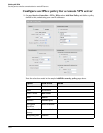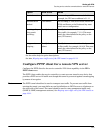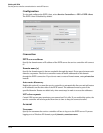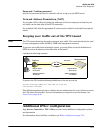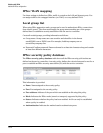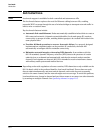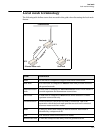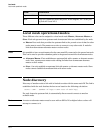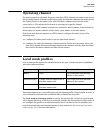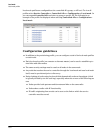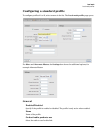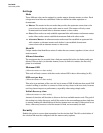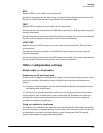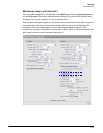
Local mesh
Local mesh operational modes
Term Definition
Upstream link A link that transports data towards the ground network.
Peer Any two connected nodes are peers. In the diagram, AP 1 is the peer
of both AP 2 and AP 3.
Local mesh operational modes
Three different roles can be assigned to a local mesh node: Master, Alternate Master, or
Slave. Each role governs how upstream and downstream links are established by the node.
Master: Root node that provides the upstream link to the ground network that the other
nodes want to reach. The master never tries to connect to any other node. It waits for
links from downstream alternate master or slave nodes.
Note It is possible to have several masters for the same mesh ID connected to the ground network.
This can be used to provide redundant paths to the ground network for downstream nodes.
Alternate Master: First establishes an upstream link with a master or alternate master
node. Next, operates as a master node waiting for links from downstream alternate
master or slave nodes.
Slave: Can only establish an upstream link with master or alternate master node. Slave
nodes cannot establish downstream links with other nodes.
Node discovery
Discovery of another node to link with is limited to nodes with the same mesh ID. The link is
established with the node that has the best score based on the following calculation:
Score = SNR - (Number of hops x SNR cost of each hop)
If a node looses its upstream link, it automatically discovers and connects to another
available node.
Note A master or alternate master must be seen with an SNR of 20 or higher before a slave will
attempt to connect to it.
13-4



